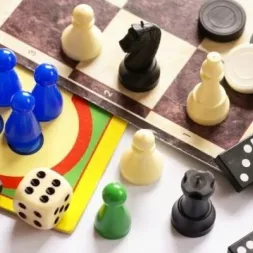
Game-Based Learning and Gamification in the Classroom
Participants will be introduced to the concept and practice of gamification, with a particular focus on social and educational games that make learning activities more exciting, and therefore, effective. They will also have an opportunity to create a game of their own, having been introduced to some concepts and models of game design.
Description
Everybody loves to play games: they are engaging, immersive, and fun. Thus, can we make our educational activities just as exciting and rewarding? This is “gamification”, that is, the inclusion of elements of game design in other areas or activities. Research and observation suggest that gamification provides tremendous benefits when used appropriately. Hence, learning about it, and how to integrate them effectively in an educational framework is a powerful asset in the curriculum of any professional in the fields of education and communication. This course will teach you how to make educational activities more effective through the use of gamification. It will cover topics like traditional games, role-playing games (RPGs), tabletop games, LEGO, and digital and video games. There will be a specific focus on social and educational games. It will introduce participants to concepts and models of game design, providing them with the full experience of designing a game (phases of concept, design, prototype, and playtest). As it is a complex activity, it will draw from engineering, informatics, psychology, sociology, history, anthropology, communication science, arts, and more to make teachers feel at ease while creating their first game. The course will have a very hands-on approach, combining elements of the theory, group work, and discussion with experiential phases in which participants will have an opportunity to design their own games and learn from direct experience. As a participant, you will also be introduced to the concept and practice of gamification, and receive easy-to-apply tips to include elements of game design in your professional and daily life.
Learning objectives
Participants in the course will learn to:
- Distinguish between various kinds of games;
- Identify principles and definitions of game design (e.g., reward mechanisms, activity loops, habit creation, fun, immersive experience, emerging and branching storytelling);
- Use games for educational purposes;
- Draw from their personal experience or design entirely new game-based activities;
- Include game elements in their educational work (gamification);
- Exploit games to spread or reinforce values in communities and society.
--> Download all course info in PDF <--
Methodology & assessment
Certification details
Here's how we ensure your achievements are recognized and validated:
- Certificate of Attendance: Upon successful completion of your course, you will receive a Certificate of Attendance in line with Erasmus quality standards.
- Europass Mobility Certificate: If requested, you can also receive the Europass Mobility Certificate.
- Seamless Administration: We provide assistance and guidance to our participants throughout every step of the project: from the grant application to the final documents.
To make your participation accessible, our courses are designed to allow you to request 8 days of individual support for your subsistence costs. This includes 6 days for the course and an additional 2 days for travel.
Useful resources:
- Live Chat support: Monday-Friday | 8:30-22:30 CET
- FAQ
- Guides to Erasmus+
- OID Numbers and Fiscal Data
A 60 € late registration fee will be applied if you register less than 8 weeks before the course start date.
Pricing, packages and other information
-
Price:480Euro
Дополнителни информации
-
Јазик:English
-
Target audience ISCED:Primary education (ISCED 1)Lower secondary education (ISCED 2)Upper secondary education (ISCED 3)
-
Target audience type:TeacherHead Teacher / PrincipalTeacher Educator
-
Learning time:25 hours or more
Past sessions
More courses by this organiser

Google for Education: Search, Collaborate and Create

Integrating AI in the Classroom With Critical Thinking



